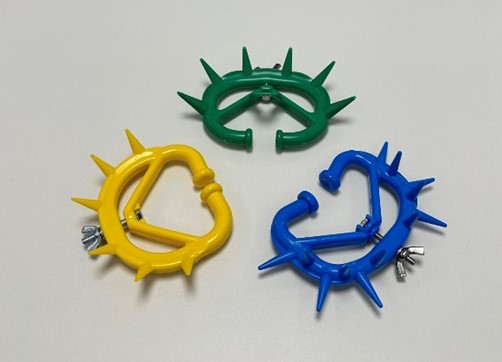In a container around the world: about supply chains along steel lines

The Gomel branch of the Belarusian Railways is steadily increasing the volume of cargo transportation in containers. The most demanded directions are Azerbaijan, RUSSIA , Uzbekistan, CHINA . Main routes pass through Belarus. BelTA correspondents, together with BelZhD employees, accepted containers with goods that arrived from another continent.
In trendThe Gomel branch of the Belarusian Railways is steadily increasing the volume of cargo transportation in containers. The most demanded directions today are Azerbaijan, Russia (including ports), Uzbekistan, China.
Transportation of goods in containers is one of the most competitive for today. This method of transporting goods and products is in demand both among state-owned enterprises and private firms. For example, new opportunities are opening up for Belarusian companies to expand their EXPORT horizons. This is of particular relevance in the context of periodic delays in supply chains.
With many manufacturers focusing on the east, China has become one of the most promising destinations for container shipping. Since the beginning of the year, more than two dozen container trains have been sent there from the Gomel region alone. This is many times higher than last year's figures. In the top of popular products are forest products, products, in particular dry MILK , dry milk whey, etc.
Together with the consignors of the cargo, optimal decisions are made, logistics schemes for delivery to foreign markets by rail are coordinated. “Thus, new transport and logistics routes are used to deliver products to China through the land crossings of Kazakhstan. To organize transportation in new directions, the rolling stock of both the owners of Belarus and the operator companies of Russia, Kazakhstan, and Estonia is involved,” the company says.
In actionPreparation for unloading and registration of the container at the city freight station "Centrolit" of the forwarding republican unitary enterprise "Gomelzheldortrans" begins before dawn. In the barely penetrating rays of the winter sun, snowplows work.
By the arrival of the involved services, the HEAD of the cargo area, Oleg Karetsky, notes the readiness of the entire team.
The machine operator of the integrated brigade, Alexander Frolov, reports on the situation at a height - from the crane cab. Against the background of this massive construction, the containers are slightly "shrinking".
Fasteners are fixed with an iron grip - and the container, for the convenience of further work, making a 180-degree turn, is lowered from the platform to the prepared site.
This time there are cars in containers. Premium crossovers have their customers in different countries.
"We work according to special internal programs. We can determine the exit of a container from MINSK in a day, from Lithuania - in a week. And we notify the client that the containers left on such and such platforms. Then everything is as agreed. Upon arrival, wagon sheets and customs declarations are issued , shipping documents. The receiver-shipper generates a set of documents and notifies the customs authorities, where they also determine the procedure. For example, in this case, the customs inspection is complete: the container is opened with the participation of service dogs. With them, we lower the containers to the site, with them, the opening is in progress. They launch dog. Everything is fine - the inventory was made, "says Oleg Karetsky.
Anastasia Asadchaya, the cargo and baggage acceptance officer, takes notes, explaining: “First of all, we need to check the seals so that the data on the documents converge. Then we carry out a commercial inspection. The cargo must correspond to the declared nomenclature, as well as in terms of volume and quantity.” Anastasia recalls: there were cases when the container’s LPU was violated. Then a commission inspection is required at an autopsy with the police and railway guards. This time it's not necessary.
The registration process has been started.
The cargo is placed in the customs control zone. For these cars, Gomel is a transit point. They will then proceed through Lithuania to their final destination.
transit cargo
8-10 containers can arrive at the same time. There was a maximum of 15. "We draw up everything according to the regulations," emphasizes Oleg Karetsky.
According to the employees of the enterprise, opening the way and opportunities for customers, and for them, the strokes of the economic picture, trends of the direction are revealed. “Yes, and you can pull up the geography,” they joke on the site.
Thus, private firms transport refractory cement, bricks, and granite slabs. In two months, the third batch of containers with cars arrives. This business has been growing in recent years. "The customer appreciated the reliability, efficiency and value for money of such transportation," the railroad worker smiles.
Containers of different capacities are sent in transit. "There are those who, as the saying goes, you can even have a wedding," the employees smile. For example, four sedans can be easily and securely fixed in one container.
Control centerA whole infrastructure operates for the operational formation of trains, maneuvering and direction of movement of wagons with containers.
With something cosmic, but on earth, the post of microprocessor centralization is associated.
On large-scale monitors in the form of color schemes, the main indicators are displayed.
These "cardiograms" of the active rhythms of life on the steel line are easily read and analyzed by dispatchers Yuri Petrov and Anna Shesholko.
Questions about specific railway codes and professional slang are answered with a smile - sometimes they understand each other without words, and how to synchronize actions in a particular situation, they clarify by sight.
Literally for a second, the duty officer at the Alla Kot station is distracted from the monitor for a photo.
At the workplace of the shunting dispatcher Vyacheslav Nagorny, there are several devices for communication, both internal and external. However, his workspace is not limited to the office.
At a glance, a panorama of the territory literally slashed with iron threads opens up from the position of the hump automatic centralization post.
From here, wagons with massive containers on the marshalling yard look like small building blocks.
Sergei Gromyko, duty officer at the marshalling yard, is responsible for the optimal and efficient distribution of trains.
Its own hierarchy has also been created in the electronic space. So, full navigation, up to the preliminary calculation, is on the company's website. Work from anywhere in the continent - in a few mouse clicks. Multi-ton containers - in a constant transport cycle. Their path runs along the trajectories of steel highways, as well as water and air routes.
As they say, the route is built.
Photo by Sergey KHOLODILIN,
BELTA.
Read together with it:
- О самых распространенных причинах пожаров рассказали в МЧС2 октября, Минск. О самых распространенных причинах пожаров рассказал начальник главного управления надзора и профилактики МЧС Дмитрий Турчин на "Предупреждение чрезвычайных ситуаций в осенне-зимний период. Профилактика пожаров и гибели людей от них", которая прошла в БЕЛТА. "В республике наблюдается рост количества пожаров на 7,7%, и на 1......
- Боливия экспортирует говядину на сумму 797 миллионов долларов и вводит новые цифровые сертификаты для внешней торговлиЭкспорт говядины из Боливии в период с 2021 по 2025 год достиг 797 миллионов долларов. Китай является основным рынком сбыта этого мяса, на который приходится 74% продаж, сообщила Карина Серрудо, генеральный директор Национального таможенного управления. Параллельно с этим ведомство включило сертификат безопасности экспортных пищевых продуктов для говядины в систему «Единое окно для внешней торговл...
- Bloomberg узнал о плане G7 значительно ужесточить санкции против РоссииНовый пакет санкций будет включать меры, в частности, против энергетики, финансов и военной промышленности, а также крупнейших нефтяных компаний России. Разработку пакета G7 планирует завершить в октябре, выяснил BLOOMBERG Страны «Большой семерки» (G7) приближаются к соглашению о значительном ужесточении санкций в отношении России, сообщает агентство Bloomberg со ссылкой на проект заявления. «Мы с...




























































